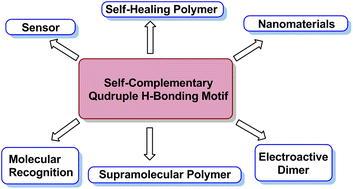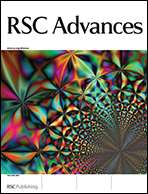Self-complementary quadruple hydrogen bonding motifs: from design to function
Abstract
Self-assembly is an important phenomenon that allows nature to carry out many important functions. Of the several non-covalent interactions present H-bonding finds a special place in the design strategies employed by chemists due to its specificity and directional nature. The strength, directionality, and specificity of H-bonding interactions could be further enhanced by using a combination of several such interactions. This review discusses exclusively the developments in the field of self-complementary quadruple H-bonded motifs and their application in various emerging fields.


 Please wait while we load your content...
Please wait while we load your content...